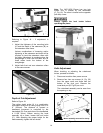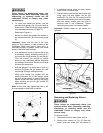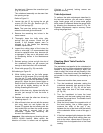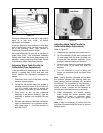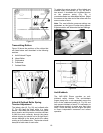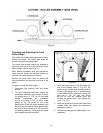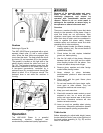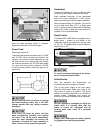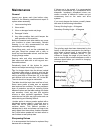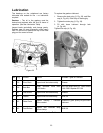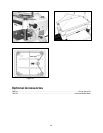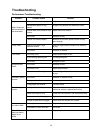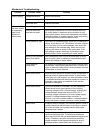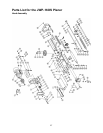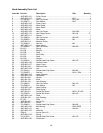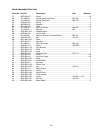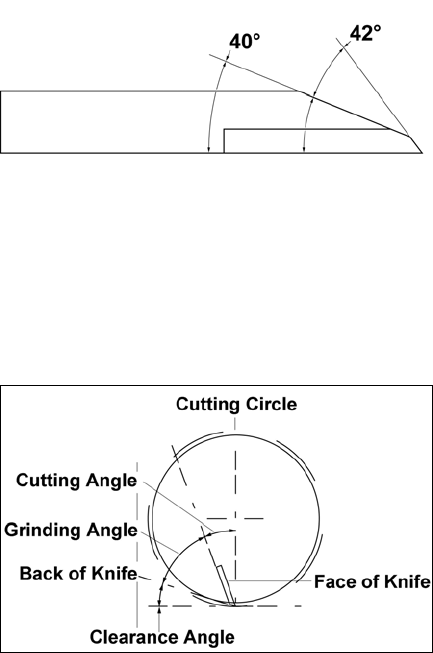
22
Maintenance
General
Inspect your planer each time before using.
Check for the following conditions and repair or
replace when necessary.
1. Loose mounting bolts.
2. Worn switch.
3. Worn or damaged cords and plugs.
4. Damaged V-belts.
5. Any other condition that could hamper the
safe operation of this machine.
Buildup of sawdust and other debris can cause
your machine to plane inaccurately. Periodic
cleaning is not only recommended but also
mandatory for accurate planing.
Close-fitting parts, such as the cutterhead slot
and gibs, should be cleaned with a cloth or
brush and non-flammable solvent, and free from
clinging foreign matter.
Remove resin and other accumulations from
feed rollers and table with a soft rag and non-
flammable solvent.
Periodically check all the chains for proper
tension and adjust accordingly if required.
Tip: If a foreign object nicks the knives, instead
of throwing them away or trying to grind out the
deep nick, simply stagger the knives in the head,
moving one knife no more than 1/8" to the right
and another knife no more than 1/8" to the left.
The nick should no longer be noticeable.
The table should be kept clean and free of rust.
Some users prefer a paste wax on exposed
steel and cast iron surfaces. The wax provides a
layer of protection as well as reducing friction
between lumber and the table making cuts faster
and smoother. Avoid any wax that contains
silicone or other synthetic ingredients. These
materials can find their way into lumber and can
make staining and finishing difficult.
Another option is talcum powder applied with a
blackboard eraser rubbed in vigorously once a
week; this will fill casting pores and form a
moisture barrier. This method provides a
tabletop that is slick and allows rust rings to be
easily wiped from the surface. Another important
fact is that talcum powder will not stain wood or
mar finishes as wax pickup does.
Sharpening Knives
It is recommended that knives be replaced they
become dull or damaged.
If knives are to be reused, it is recommended
that they be sharpened by a professional knife
sharpener. Improperly sharpened knives can
cause a number of defects to lumber and put
unnecessary load on the motor and drive
systems.
If you must sharpen the knives yourself, please
take note of the following information:
Primary Grinding Angle – 40 degrees
Secondary Grinding Angle – 42 degrees
The grinding angle has been determined by the
factory to be the best compromise for planing a
wide variety of wood types. In most cases, that
angle will produce excellent results. If you
choose to change the angle of your bevel, be
sure to consult with a trained sharpener or with a
reference book before you commit to changing
the angle of bevel.
Figure 38



